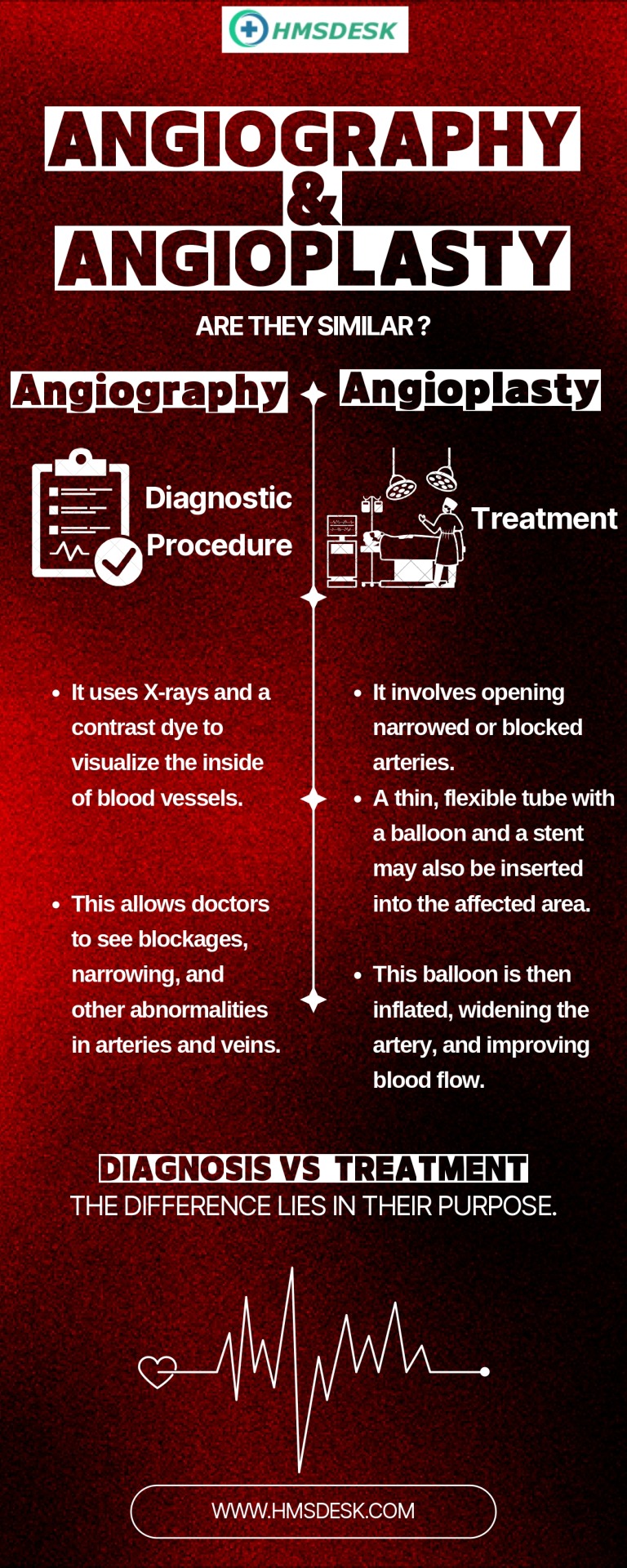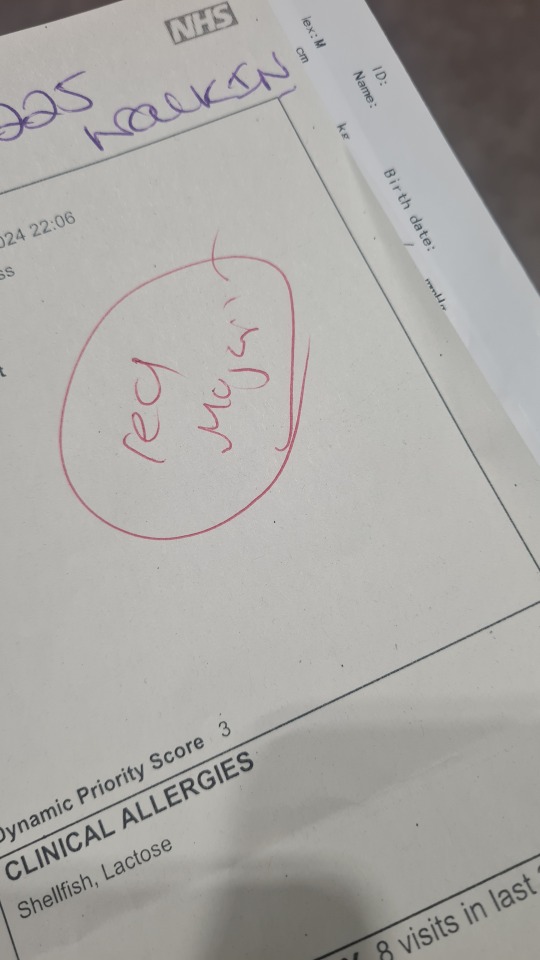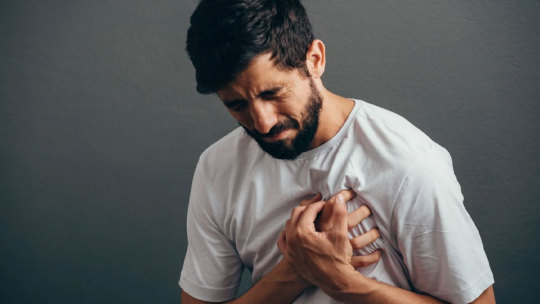#angiography surgery
Text
#EECP Treatment#eecp#ecp#Heart hospital#surat#navsari#gujarat#health & fitness#saaral#Alternative#Angiography report#Angioplasty Gujarat#Angioplasty surat#Best cardiologist Gujarat#Best cardiologist surat#Best heart hospital gujarat#Bypass Alternative#Bypass Other Option#Bypass surgery Gujarat#Bypass surgery surat#Chest Pain Natural Treatment#Ct angiography report#CT Coronary Angiography#ECP#ECP treatment#EECP#Heart Failure#Heart hospital in gujarat#Heart surgeon in Gujarat#Heart surgeon in surat
2 notes
·
View notes
Text
Understanding Angioplasty: A Step-by-Step Journey from Blockage to Recovery

Angioplasty, a medical marvel of modern science, is a procedure that opens blocked or narrowed arteries, restoring blood flow to the heart muscle. If you or someone you know is preparing for this intervention, understanding the journey from pre-procedure preparation to post-procedure recovery can alleviate fears and uncertainties.
Join us as we embark on a comprehensive exploration of the angioplasty procedure, step by step.
Preparation: The Journey Begins
Before the procedure commences, thorough preparation is key. Patients typically undergo a series of pre-procedural evaluations, including blood tests, electrocardiograms (ECG), and possibly imaging scans like angiograms. These assessments provide valuable insights into the condition of the arteries and guide the medical team in planning the intervention.
Arrival at the Hospital: Setting the Stage
On the day of the procedure, patients arrive at the hospital and are greeted by a team of skilled medical professionals dedicated to their care. After completing necessary paperwork and consenting to the procedure, patients are prepped for the angioplasty in a designated pre-operative area. Here, they receive instructions, have vital signs monitored, and are prepped for anesthesia administration.
Anesthesia: Drifting into Comfort
Once in the angiography suite, patients are administered local anesthesia to numb the area where the catheter will be inserted. In some cases, mild sedation may also be provided to help patients relax during the procedure. While fully conscious, patients typically feel minimal discomfort or pain due to the anesthesia.
Catheter Insertion: Navigating the Arterial Pathway
With the patient comfortably positioned, the interventional cardiologist begins the procedure by inserting a thin, flexible tube called a catheter into a blood vessel, usually in the groin or wrist. Guided by fluoroscopy, a type of real-time X-ray imaging, the catheter is carefully threaded through the arterial pathway until it reaches the blocked or narrowed area of the coronary artery.
Angiography: Visualizing the Blockage
Once the catheter is in position, contrast dye is injected through the catheter, allowing the cardiologist to visualize the arterial anatomy and pinpoint the location and severity of the blockage. This angiographic imaging provides crucial information for planning the subsequent steps of the procedure.
Balloon Inflation: Opening the Artery
With the blockage identified, the next step involves inflating a tiny balloon at the tip of the catheter within the narrowed artery. This balloon inflation compresses the plaque against the arterial walls, widening the artery and restoring blood flow to the heart muscle. The duration and pressure of balloon inflation are carefully controlled to achieve optimal results.
Stent Placement: Scaffolding for Support
In some cases, a metal mesh tube called a stent is inserted into the newly widened artery to provide structural support and prevent re-narrowing, known as restenosis. The stent is expanded using balloon inflation and remains permanently in place, keeping the artery open and ensuring long-term blood flow.
Recovery: Restoring Health and Vitality
Following the procedure, patients are closely monitored in a recovery area for a few hours to ensure stability and assess for any complications. Once deemed safe, patients are discharged with instructions for post-procedural care and follow-up appointments.
Angioplasty is a transformative procedure that restores blood flow to the heart, alleviating symptoms and improving quality of life for countless individuals worldwide.
By understanding the step-by-step journey of angioplasty, patients and their loved ones can approach the procedure with confidence and optimism, knowing they are in capable hands every step of the way.
#angioplasty in pune#coronary angioplasty in dhanori#angiography and angioplasty#angioplasty surgery#angioplasty cost
0 notes
Text
What Causes Heart Disease in Athletes and Fitness Enthusiasts? What Symptoms Should You Look Out For?

The more physically fit you are, the lower your risk of developing cardiac disease. However, experienced cardiologists associated with the best heart failure treatment hospital in Bangalore caution that while this was once true, the landscape has changed significantly. Even the fittest individuals are not immune to heart ailments.
Expert cardiac doctors associated with Suguna Hospital, recognized as the Best Cardiology Hospital in Bangalore, share a few useful thoughts.
Causes of Heart Diseases in Athletes
“If you are an athlete, you are at the peak of your fitness level.” Unfortunately, this isn’t always the case, as evidenced by cases showing that even fit individuals can experience cardiac problems.
While smoking and drinking are the commonly observed causes that ruin your heart as well as your health, too much physical activity is also not good for your heart.
Additionally, there are some other causes that can put you at high risk of a heart failure though you may be extremely fit.
Intense and prolonged physical activity
Family history of heart attacks or other heart diseases
Performance enhancing drugs in athletes
Underlying health conditions that have been ignored as minor health issues
Symptoms to look out for
Eminent cardiologists associated with Suguna Hospital stress that the following symptoms observed should be immediately brought to the notice of your cardiologist.
Uneasiness in the chest during intense workout
Continued exhaustion or fatigue
Difficulty in breathing during workouts
Bout of Nausea or Vomiting during workouts
Dizziness, Lightheadedness
Irregular heartbeat
Gone are those days when age would be a key factor behind a cardiac disease. Today, irrespective of your age and no matter how fit you have been, you are not safe from a heart problem. Hence, it is extremely vital to practice a good diet and a sustainable fitness regime. Hence, If you’re wondering, ‘Which is the Best Heart Specialist Hospital in Bangalore to connect with?’ get in touch with our experienced cardiology team at Suguna Hospital immediately.
#top cardiologist in Bangalore#Bangalore heart hospital#Bangalore best cardiologist#best cardiologist hospital in Bangalore#cardiac specialist in Bangalore#best vascular surgery hospital in Bangalore#best vascular surgeons in Bangalore#cardiologist in Bangalore#heart specialist hospital in Bangalore#best cardiology hospital in Bangalore#good heart hospital in Bangalore#cardiac surgery hospital in Bangalore#angioplasty surgery hospital in Bangalore#angiography in Bangalore#cardiac rehabilitation service in Bangalore#signs of silent heart attack#best heart failure treatment hospitals in Bangalore
0 notes
Text

Cardiology is a medical field that is concerned with the examination and treatment of diseases and conditions related to the heart. our best cardiologists in Sonipat are medical professionals who have expertise in these cardiovascular diseases and give comprehensive care for the same. Bhagwan Das Hospital has the best cardiologist and we offer the best open heart surgeries in Sonipat.
0 notes
Text
Angioplasty is a medical procedure used to treat narrow or blocked arteries, usually in the heart or legs. The procedure involves using a small balloon catheter to open up the blocked artery and restore blood flow to the affected area. The catheter is inserted through a small incision in the groin or arm and guided to the site of the blockage using imaging techniques such as X-rays. Once in place, the balloon is inflated, compressing the plaque or blockage against the walls of the artery and widening the passageway. In some cases, a stent, a small wire mesh tube, is also placed in the artery to help keep it open after the balloon is deflated and removed. Angioplasty is typically performed by an interventional cardiologist or vascular surgeon and is often done on an outpatient basis with local anesthesia. It can be a highly effective treatment for certain types of arterial blockages and can help relieve symptoms such as chest pain or leg pain, improve blood flow, and reduce the risk of complications such as heart attack or stroke.
#health#cardiac problems#cardiac surgery#cardiac arrest#cardiac arrhythmia#angioplasty#angiography#angiogram
1 note
·
View note
Text
Being the best hospital for angiography in Delhi ,we assure that you will be under our perception and your important bodily functions will be checked for few hours. You will be urged to walk. Drink a lot of water, to dispose of color from your body. In view of your reports, your primary care physician will educate you about conceivable arrangement regarding treatment. You might be sent home around the same time or a short-term medical clinic stay might be encouraged. Follow-up arrangement will be planned as needs be.
#best hospital for angiography in Delhi#what is robotic surgery#cardiologist in delhi#best heart hospital in delhi#gastroesophageal reflux disease#cardiologist delhi#delhi heart hospital#robotic surgery in india#best hospital in delhi#best cancer hospital in delhi#best cardiologist in delhi
1 note
·
View note
Text
#Sibia Medical Centre is the best heart hospital for No Surgery cardiac care alternative treatments for Chest pain#angina#Coronary Artery Disease (CAD)#heart attack patients#Diabetes#Blood pressure#Leg Pain#Parkinson's#Cerebral ischemia unfit for angiography#angioplasty stents & heart bypass surgery (CABG)#to avoid them and for post-covid cardio-pulmonary rehabilitation with CCG heart flow mapping#EECP Natural Bypass#Chelation Therapy (ACT) (BCA)#ESMR Cardiac Shockwave Angiogenesis#Also treat Kidney stone#Knee pain#cancer tumor palliation#detoxification#immunity#antiaging#Spinal correction for backache#cervical spondylosis#sciatica#lose weight#remove stubborn fat#lose inches#and look smart with Zerona#IPL Laser for unwanted hair#wrinkles#pigmentation
0 notes
Text
Balloon angioplasty and stents are important treatments for patients with narrowed or blocked arteries. This detailed article focuses on what you need to know before your procedure.

#angioplasty#angiography#cardiologist#cardiology#heartattack#hearthealth#heart#doctor#cathlab#stent#angiogram#coronaryarterydisease#healthcare#cardiovascular#surgery#ecg#heartdisease#heartsurgery#cabg#vascular#heartdoctor#coronary#bypasssurgery#cardiac#bypass#cardiacarrest#covid#vascularsurgery#vasculardisease#worldheartday
0 notes
Text
How Do You Use an Angiography Drape?
You can see what instruments you're working with owing to the transparent side panel of the drapes, which is also easy to use. They are comprised of an absorbent impermeable material to help maintain a dry working environment and protect the patient.
These disposable surgical angiography drapes are created from poly tissue and nonwoven. It can absorb moisture and has a high degree of strength. These sterile drapes for angiography surgery are less prone to collect spills and are stain-resistant. In addition, they are devoid of latex and chemical agents. For usage in clinics and hospitals, it is the finest choice.
Angiography Drapes At PSIDispo
Plasti Surge Industries Pvt. Ltd. manufactures PPE KIT and angiography drape packs under strict quality standards to guarantee durability at the user end.
PSIDispo will provide you with personal protective equipment. It is made from top-notch materials to guarantee optimal functionality.
PSIDispo angiography drapes are designed to control infection during angiography surgery effectively. Our angiography drapes encompass drapes designed mainly for use on the radial or femoral artery.
Our most recent additions, similar to all of the drapes, provide the vital mix of qualities needed for your demanding work:
Surgical drapes incorporating CONTROL* Plus Reinforcement Fabric satisfy the AAMI Level 4 liquid barrier performance test criteria.
Abrasion-resistant fabric4,8, and low-lint3 fabric
Fabric with tearing and strikethrough resistance 5, 6, and 8
The most fantastic grade for heat resistance to laser ignition2,8 and fam resistance is provided by CONTROL* Plus Reinforcement Fabric.
The Angiography drapes series from PSIDispos comes in a range of sizes and has the following features:
Armboard Covers, Adhesive Fenestrations with Apertures, Reinforcement Zones, and Clear PE Windows.
When to Use Surgical Angiography Drapes
Brachial angiography
Pacemaker defibrillator insertion
Radial angiography
Hybrid O.R. interventions
Femoral angiography, pediatric, adult, and neonatal
PSIDispo created this drape in response to feedback received from surgeons. It has a variety of advantages.
You can choose from the angiography drape, the radical femoral angiography drape, the femoral angiography drape, and the brachial angiography drape among our four angiography sterile drapes. They are the primary angiography pack drapes.
PSIDispos’ Angiography Sterile Drape Features
Angioplasty and femoral angiography procedures
Preventing the spread of germs
Lightweight and supple in texture
Free of chemicals and latex, gentle on sensitive skin
PsiDispos’ Angiography Sterile Drapes Parameters
Material Structure: SMS, SSMMS, SMMMS, PE+SMS, PE+Hydrophilic PP, PE+Viscose
Gram Weight:50g, 55g, 58g, 60g
Color: Green, Blue, White, or as requested
Product Type: Surgical Consumables, Protective
OEM and ODM: Acceptable
Fluorescence:No fluorescence
Standard: EN13795/ANSI/AAMI PB70
Certificate: CE & ISO
Elongation at break:MD≥15%, CD≥115% (Distance:100mm,width:50mm, speed:300mm/min)
Tensile Strength:MD≥71N, CD≥19N(Distance:100mm,width:50mm, speed:300mm/min)
How to drape it?
Put the drape over the patient's pubis symphysis, fold it as indicated by arrows, and bring it up over their head. The lower portion of the drape should be opened up toward the patient's legs by following the arrows. The drape is then completed.
Wrapping Up
Do you want to know more about how PSIDispo's surgical angiography drapes and other cutting-edge products can help you provide first-rate solutions and services to your patients? Contact our expert customer service staff through e-mail or telephone to get a speedy answer to your concern; Email: [email protected] or call +91-7798800781.
#surgical angiography drapes#angiography drape packs#disposable surgical angiography drapes#drapes for angiography surgery
0 notes
Link
The Average Price of Spine Surgery Cost in Chennai. Top Hospitals allows you to research the cost of your surgery, a list of your potential providers, and patient reviews. Credihealth allows you to shop around for the best price on spine surgery in Mumbai and schedule your procedure at your convenience.
#cost of spine surgery in chennai#spine decompression in India#spine surgery cost in india#lumbar puncture test cost in delhi#digital subtraction angiography procedure in India#spine surgery cost in bangalore
0 notes
Text
Purchase Best Glaucoma Therapies
One of typically the most detrimental situations to vision is usually glaucoma. Whether it isn't very detected early, a significant amount of permanent vision reduction is usually to be expected. Sadly, there is absolutely no cure, so glaucoma treatment and glaucoma surgery will be the only training of action. This may sound pretty awful, but blindness is simply not an imminent chance if you get proactive stages in looking at for and combatting glaucoma.
Get Knowledgeable
If you find out what to expect, you will take the proper steps as rapidly as you notice symptoms. Hopefully a person never do, yet it's good in order to be prepared. Do some online research about open-angle and angle-closure glaucoma. retinal detachment is an important stage because it's possible you will not ever show symptoms. That's the case intended for open-angle glaucoma, which in turn presents as steady vision loss more than time, usually in the peripherals.
See a Medical professional
See your attention doctor regularly for standard check-ups. They or she will check for the signs of glaucoma to catch it early on. Medical professionals suggest that the thing is your own eye doctor each five to ten years, assuming you happen to be under forty yrs old and also have zero risk factors (i. e. family history, heritage, high blood strain, or diabetes. ) While you age, the particular frequency of these kinds of visits should increase. By the period someone reaches sixty-five, these check-ups should occur every half a dozen months to a yr.
Get Treatment
In case you do get hold of clinically determined to have glaucoma, find the best glaucoma treatment for you by working closely together with your doctor. Centered on your specific situation, your physician will dsicover that eye drops are effective on the subject of their own, or perhaps you will in addition need laser treatments or even surgeries to lessen visor pressure. When individuals experience adverse section effects, or the particular glaucoma treatments aren't working, that's generally when a surgeon can make a small sillon to lower stress, or even insert a microdevice named a shunt.
Exercise Regularly
No matter what health problems some sort of person may get dealing with, one associated with the best techniques to maintain maximum health is to be able to get 30 minutes of exercise daily. When you're not employed to working out frequently, start off gradual. You can chat a brisk stroll every single day, then graduate student to using the elliptical at the gym or perhaps taking bouncing classes. Find typically the right type of exercise for your physique and stay energetic through the entire week.
#lattice degeneration of the retina#Bladeless Cataract surgery#retinal detachment#retinal detachment surgery#glaucoma treatment#symptoms of glaucoma#Fundus Fluorescein Angiography Test#ffau#paediatric ophthalmologist
1 note
·
View note
Text
Are Angioplasty and Angiography Similar?

In the world of medical terminology, there are often terms that sound similar but refer to vastly different procedures. Have you ever heard the terms “angioplasty” and “angiography” thrown around and felt a lot of confusion? You are not alone. These similar-sounding procedures often leave many people scratching their heads, wondering what the difference is.
However, the confusion surrounding them persists, causing misconceptions and misunderstandings among the public.
Worry not, because this blog is here to clear the air and shed light on these two crucial medical interventions.
Angiography: Diagnostic Procedure
Angiography is like your high-tech magnifying glass. It uses X-rays and a contrast dye to visualize the inside of blood vessels. This allows doctors to see blockages, narrowing, and other abnormalities in arteries and veins. It is like a roadmap of your vascular system, highlighting any potential roadblocks.
Angioplasty: Therapeutic Procedure
Angioplasty involves opening narrowed or blocked arteries. During this process, a thin, flexible tube with a balloon at its tip is inserted into the affected area. This balloon is then inflated, widening the artery, and improving blood flow. Sometimes, a stent, a small mesh tube, may be inserted to keep the artery open after the balloon is deflated and removed.
The Key Distinction:
Diagnosis vs. Treatment
The difference lies in their purpose:
• Angiography: diagnoses the problem by visualizing the blockage.
• Angioplasty: treats the problem by physically opening the blockage.
Despite their differences, the confusion between angioplasty and angiography is understandable. Both terms involve procedures related to blood vessels, and they often go hand in hand in medical practice. Moreover, the unfamiliarity with medical jargon can contribute to the mix-up.
To further complicate the matter, new advancements in medical technology have blurred the lines between these procedures. For example, certain angiography techniques now integrate components of angioplasty, like angiography-guided angioplasty, i.e. instantly transitioning from diagnosis to treatment upon detecting blockages.
Understanding these procedures’ differences can empower us to participate more actively in our healthcare discussions. By knowing these terms, we can approach conversations with our doctor with greater clarity and confidence.
To know more about this, visit: -
https://hmsdesk.com/medical/telemedicine/pune/best-cardiologists-in-pune
#angioplasty surgery#angiography#angiography and angioplasty#angiography in pune#angioplasty in pune
0 notes
Text
update
I'm back in hospital again :0) been here since Friday (12th), was out trying to do a food shop and had the most crippling sudden headache, seized etc, which isn't great as I'm still in a neck brace for 6 more weeks. A manager had to call 999 and an ambulance took me away.
Had multiple ECGs, they've all came back as abnormal, had an angiography- the suspected left atrial enlargement was confirmed.
Had a head CT and I have a small brain bleed (haemorrhage), so have been admitted these past few days, doctors mentioned the injury I had on the 17th which resulted in me breaking my neck could have escalated this. (Fun fact on the 17th March my head was never checked over, they only did a cervical CT to check my vertebra, so an investigation has opened). Thankfully they are confident it can be treated with medication and no invasive surgery is needed.
My god I am so tired with all this medical stuff, the cardiology and neurology specialist referrals can't come any sooner.


8 notes
·
View notes
Text
What Is the Difference Between a Heart Attack and Sudden Cardiac Arrest?

Cardiac emergencies present the most challenging and life-threatening medical situations globally. According to expert cardiologists at Suguna Hospital, acclaimed as the best Heart Specialist Hospital in Bangalore, among the most prevalent cardiac emergencies are Heart Attacks and Sudden Cardiac Arrests.
At first, they might seem similar, but it’s really important to know how they’re different, especially if you think you might have a heart problem.
Heart Attack VS Sudden Cardiac Arrest
Heart specialists from the the Best Cardiology Hospital in Bangalore, explain that
A Heart Attack occurs when blood flow to the heart is blocked, whereas Sudden Cardiac Arrest results from a breakdown in the heart’s electrical system, affecting its rhythmic function.
A Heart Attack is also known as Myocardial Infarction, while Cardiac Arrest is termed Sudden Cardiac Death, often proving fatal.
Both Heart Attack and Sudden Cardiac Arrest demand urgent attention, yet their symptoms vary.
Symptoms of Heart Attack
Severe pain in the chest
Chest discomfort
Pain in shoulders, back, neck or jaw
Sweating
Nausea and Vomiting
Irregular heartbeat
Symptoms of Cardiac Arrest
Difficulty in breathing
Acute fatigue or weakness
Loss of pulse or feeble pulse
Nausea and vomiting
Causes – Heart Attack
A heart attack happens because of coronary artery disease. Things that increase your risk of having a heart attack include:
Sedentary lifestyle
Lack of exercises
Obesity
High blood pressure levels
High blood sugar levels
Causes- Sudden Cardiac Arrest
Irregular heartbeat
Smoking
Previous history of heart ailments
Family history of heart diseases
Consumption of banned products
While both Cardiac Arrest and Heart Attack can be deadly, Cardiac Arrest is an emergency needing urgent attention. It’s crucial not to delay and reach the nearest Cardiac Surgery Hospital in Bangalore immediately to consult with a cardiologist.
#best cardiologist hospital in Bangalore#cardiac specialist in Bangalore#best vascular surgery hospital in Bangalore#best vascular surgeons in Bangalore#cardiologist in Bangalore#heart specialist hospital in Bangalore#best cardiology hospital in Bangalore#good heart hospital in Bangalore#cardiac surgery hospital in Bangalore#angioplasty surgery hospital in Bangalore#angiography in Bangalore#cardiac rehabilitation service in Bangalore#signs of silent heart attack#best heart failure treatment hospitals in Bangalore#heart specialist in Bangalore#heart doctor in Bangalore#best heart hospital in Bangalore#best cardiologist in Bangalore#top cardiologist in Bangalore#Bangalore heart hospital#Bangalore best cardiologist
0 notes
Text
FACT 4
Different modalities look at different stuff!
Ooh ooch me bones? Plain-film X-Ray or (if it's gnarly) CT!
Ooh ooch me soft tissues? Ultrasound, MRI, or CT depending on what & where! Or even X-Ray for detection of stuff like small bowel obstructions!
Ooh ooch me swallowing/digestion? Fluoroscopy!
Ooh ooch me spine/brain? MRI (unless it's 'ooh ooch me ischemic/haemorrhagic stroke or head trauma - then we'll whoosh you into CT for a quick whizz in the washing machine (gantry. it's called a gantry. shh))
Ooh ooch me heart? Echocardiography (Ultrasound), Coronary Angiography and Cardiac CT!
Ooh ooch me malignancy? Can be picked up anywhere, but will probably be biopsied with Ultrasound, CT, or even MRI depending on what & where!
Ooh ooch me need surgery? X-ray and/or fluoroscopic-style screening to watch what the surgical instruments or contrast agents are doing inside you in real-time!
4 notes
·
View notes
Text
Heart attack may occur due to many reasons like coronary artery disease, atherosclerosis, coronary artery spasm or due to advanced age, smoking habit, diabetes, high bp, obesity, stress. If patient suddenly has symptoms like chest pain along with sweating, palpitations, breathing problem, dizziness, nausea vomiting, he/she might be having heart attack and must be rushed to emergency room immediately. Heart attack may be quickly treated by medications, however in some cases heart surgery like angioplasty or Heart Bypass Surgery may be needed. There are best hospitals and best cardiac surgeons in India in different cities, like Bangalore, Chennai, where heart bypass surgery is done with great success.

#health#heart#heart disease#heart surgery#heart bypass surgery#angioplasty#angiography#chest pain#dizziness#heart palpitations#heart attack#heart valve disease#my heart is palpitating
0 notes